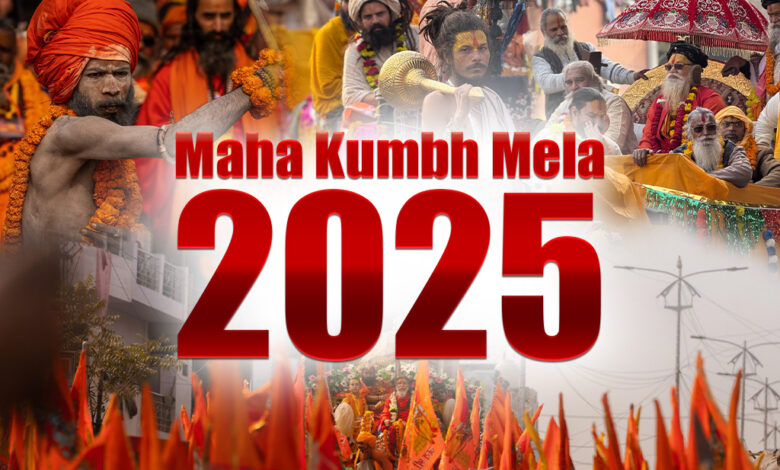Home Religion Mahakumbh 2025: 10 Key Facts That Make Makakumbh The World’s Largest Religious Gathering Mahakumbh 2025: 10 Key Facts That Make Makakumbh The World’s Largest Religious Gathering

Mahakumbh is the world’s largest religious gathering, drawing attention not just in India but globally. Let’s explore the key aspects that make this grand event truly special and unique.
Mahakumbh 2025: The Mahakumbh began on January 13 and will continue until February 26, 2025. Millions of devotees from India and around the world are participating in this sacred event, which is a unique convergence of faith, spirituality, and culture, with a special focus on bathing at the Triveni Sangam. Devotees take holy dips during significant bathing days like Mauni Amavasya, Basant Panchami, and Magh Purnima.
The grandeur and vastness of Mahakumbh can be gauged by the participation of saints, sages, renowned personalities, business tycoons, and common people from across the globe. Everyone feels blessed after taking a dip at the sacred confluence of the Ganga, Yamuna, and Saraswati. The event, lasting nearly a month and a half, has become a subject of global media attention, with news of the Mahakumbh making headlines across countries like the USA, Russia, UAE, Qatar, and Pakistan. Let’s explore the aspects that make Mahakumbh the world’s largest religious gathering.
ALSO READ: MahaKumbh 2025: Know These 10 Tips To Avoid Any Hassle While Heading To MahaKumbh
10 Key Facts About Mahakumbh That You Should Know
- The Mahakumbh festival occurs once every 144 years, making it particularly special for an entire generation. We are fortunate to witness this grand religious event. Take the opportunity to participate in the Mahakumbh, bathe in the sacred waters, and earn spiritual merit. Make sure to attend and become a part of this magnificent religious gathering.
- According to mythology and religious beliefs, the Kumbh is held only at places where drops of nectar from the Amrit Kalash, obtained during the churning of the ocean, fell. Prayagraj is one of these four sacred sites.
- The confluence of sacred rivers adds to the significance of Prayag Kumbh, as the Mahakumbh is held at the ‘Triveni Sangam,’ where the Ganga, Yamuna, and the mythical Saraswati rivers meet. According to religious beliefs, bathing at the Triveni Sangam cleanses sins and offers spiritual liberation.
- The Mahakumbh is not only a major religious event but also holds global recognition. In 2017, UNESCO included the Kumbh Mela in its Representative List of the Intangible Cultural Heritage of Humanity.
- The Kumbh Mela has become a global center of faith due to its historical significance, with records tracing its origins back 850 years. Some documents suggest its beginning in 525 BCE, while scholars believe it became more organized during the Gupta period. Evidence of the Kumbh’s grandeur is also linked to Emperor Harshavardhana’s reign (617–647 CE).
- The first written account of the Kumbh Mela is found in the stories of the Chinese traveler Hiuen Tsang (Xuanzang), who visited India during Emperor Harshavardhana’s reign. The earliest known description of the Kumbh dates back to 629–645 CE.
- Naga Sadhus are a major attraction at the Kumbh Mela. Large numbers of these ascetics gather from across the country to participate in the grand event and perform the ceremonial royal bath also know an Shahi Snan.
- The Mahakumbh attracts not only Indian devotees but also foreign worshippers from around the world, showcasing its grandeur and the universal appeal of its spiritual significance and traditions.
- The tradition of Akharas adds to the uniqueness of the Mahakumbh. Thirteen prominent Akharas hold the right to perform the royal bath. Adi Shankaracharya established the Akharas to protect and promote Vedic Sanatan Dharma.






